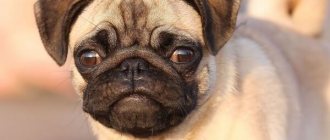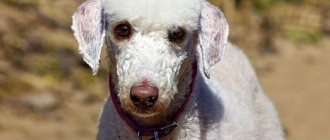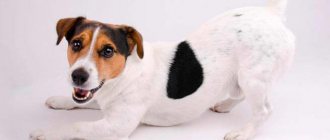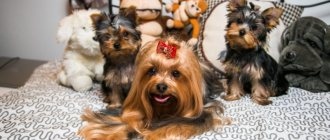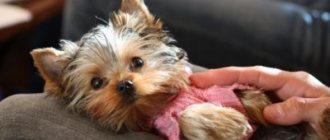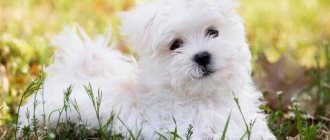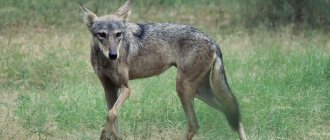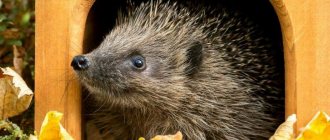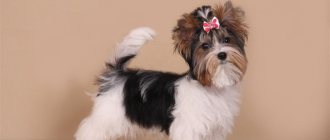Currently, the Yorkshire Terrier breed is considered one of the most fashionable and prestigious in the world. Many modern celebrities are Yorkie owners.
Often, the presence of such a dog with a favorite idol is the reason why people buy a pet of the same breed.
Currently, Yorkshire terriers belonging to the baby face breed are especially popular among breeders and dog lovers.
In the article we will look at the features of these dogs and show their photos.
History of the breed
The Yorkshire Terrier was bred in the north of England - in the counties of Yorkshire and Lancashire. Among his ancestors was the Waterside Terrier, which was described as a small, blue-gray dog with medium-length hair.
At first, Yorkies were neither fashionable nor prestigious - they were kept by peasants who were forbidden to breed large dogs so that they would not hunt for game in the forests owned by English aristocrats. These small grayish-blue terriers were their faithful companions during trips to fairs, and also guarded houses and destroyed harmful rodents.
After the start of industrialization at the end of the 18th century, many English peasants moved to the cities and took their pets with them. Later, it was these dogs that became the ancestors of the Yorkshire terriers.
In those days, people did not care about purebred breeding, and dogs brought from the north of England were crossed with representatives of other similar breeds, including the so-called “Scottish terriers” and a special long-haired variety of the Manchester terrier.
There are also suggestions that Maltese dogs were used modern Yorkshire terriers
NOTE!
Even then, there were many breed types, among which were Yorkies, which today would be classified as the baby face variety.
The fashion for breeding dogs of this type first appeared in America, which is where the name of this breed variety came from. Translated, the name baby face means “child’s face”, and, indeed, with the structure of the head and the expression of the muzzle, such a Yorkie outwardly resembles a child looking at the world with curiosity and attention.
The baby face type is very popular all over the world, including in Russia. Almost every advertisement for the sale of Yorkshire terriers contains a note that the puppies have baby faces.
But in England, which became the ancestor of the Yorkshire Terrier breed, baby faces are not popular; standard Yorkies .
Stages of growing up by month
The growth of a puppy can be tracked by months. Gradually it will be noticeable how the baby develops and grows. How many months do Yorkies grow and when do they become adults?
Newborns
Chihuahua weight by month and week: table
Puppies are born blind and deaf. They practically do not move, spend more time sleeping, and eat the rest of the time. Newborn Yorkies are highly dependent on their mother: she feeds them, licks them, and they bask next to her.
Important! It is not recommended to pick up such babies; it stresses out the mother dog. It is better to wait until the puppies begin to move independently, see and hear.
1 month
Newborn Yorkie puppies have their tails docked; when they are 1 month old, the wounds heal. During the first two weeks, the puppies' eyes open and their hearing gradually normalizes. At one month old, babies become very curious, so they need to ensure safety throughout the house.
At the age of 4 weeks, the Yorkshire Terrier gains weight very quickly and becomes almost 3 times larger. The baby is already walking and sometimes tries to run. During this period, you can begin to accustom the dog to new food, gradually moving it away from its mother.
Newborn babies cannot see or hear
2 month
At this time, separation from the mother occurs. The babies become independent and can be given to another owner. Puppies learn quickly, it is important to explain to them many rules of behavior and begin training. Misdeeds are easily punished, successes are rewarded.
Note! At 2 months, babies are already comfortable eating solid food. The new owner must carefully transfer him to a diet that will be followed constantly.
Appearance
The main thing that distinguishes baby-face Yorkshire terriers from standard dogs is the special structure of the skull and muzzle.
The head of such Yorkies has a rounded shape, the stop is more pronounced than even that of the standard type, and the muzzle is shortened and wide, the ears are set low - below the forehead line, the eyes are large, round and widely spaced.
Thanks to these external features and the special expression of the eyes - surprised and slightly naive, such a dog resembles a doll.
IMPORTANT!
Baby faces were and remain the same Yorkshire terriers - they have exactly the same character and temperament, and in appearance they are very similar to them.
To be sure that a dog belongs to this type, you need to measure the length of its muzzle and compare it with the length of the head from the tip of the nose to the occipital protuberance. If the percentage ratio turns out to be 1:3, then it really is a baby face. And if the length of the muzzle is related to the length of the head as 1:2, it means that this dog belongs to the standard type of breed.
Evidence that a dog is a baby-face type can also be an upturned nose, low-set ears and widely spaced large and strongly protruding eyes.
Biro
It can hardly be called a separate type of breed, since in any case the offspring of such dogs are unpredictable. This variety arose as a result of a mutation in beavers. The only difference between the Biro Yorkshire Terrier is the color; black color replaces chocolate. The height of such dogs varies up to 22 cm, and weight up to 3 kg.
Puppies have a calm and inquisitive character. They have no problem establishing contacts with other pets, if any.
Character traits
Baby Face is a true Yorkshire Terrier. He is brave, active and agile, despite his small size.
At the same time, like all other terriers, these kids consider themselves “big dogs,” and some males have a cocky and even pugnacious character.
At the same time, baby face Yorkshire terriers are affectionate and affectionate animals with a cheerful, playful disposition. It is not difficult to train them to get along with other animals and with children, but for this puppy to be raised properly from the first days of its arrival in its new home.
Read more detailed information about the character of Yorkies here.
NOTE!
With proper upbringing and training, a Baby Face puppy will grow into an intelligent, friendly, cheerful and playful dog that is not prone to aggression.
Features of education and training
Dogs of any breed - Yorkies, Chihuahuas, Spitz - need training. A basic course of “sit”, “lie down”, “give me a paw”, “come to me”, “stand” is enough. You can teach your pet different tricks.
Important! Training is necessary so that the Yorkie gets used to obeying its owner.
As soon as the puppy appears in the house, it should immediately be taught the rules of behavior. To do this, they provide him with a place, toys and stop unwanted actions - a spray bottle of water or a loud shout is enough. Terriers are smart dogs, so they easily learn commands.
Walking allows your pet to release energy
Accepted Standards
The maximum weight of the dog should not exceed 3.1 kg. The minimum height or weight is not regulated by the standard, and yet too small individuals (mini) are undesirable for breeding, since such animals may have health problems.
The standard describes Yorkshire Terriers as one of the smallest dogs in the world. Despite their small stature, they are proud and majestic animals, with very long, straight hair that flows almost to the ground like a silky cloak of silver-steel with a reddish tan.
The head of the baby face Yorkie is larger than that of the standard type, and much more rounded, but not dome-shaped with a well-defined stop. The muzzle is shortened and rather wide with a slightly upturned bridge of the nose.
Other standard characteristics of baby face Yorkies:
- the nose is medium-sized with pure black pigmentation;
- The teeth are small, located without gaps between them. Scissor bite;
- the eyes are dark, widely spaced and protruding, with a surprised and slightly naive expression typical of this variety;
- the ears are set below the forehead line, triangular;
- the body is square in format, not too long, compact;
- the neck is medium in length, graceful lines and proud posture;
- the withers are weakly defined, the chest is oval;
- the back is quite short, relatively wide and strong;
- the stomach is moderately tucked;
- limbs are straight, with regular joints. The knee and hock joints are weakly expressed;
- paws are large, gathered into a ball. The claws are black, moderately long, curved;
- When walking, the tail is carried above the line of the back and can be either natural length or half docked.
The coat is straight, shiny and silky. On the body it is medium in length, but on the head and muzzle it is very long, flowing down the sides. These dogs have no undercoat at all.
On the head, the Yorkie's coat is colored a rich reddish-brown shade. From the back of the head to the base of the tail, the coat is a steel-blue color, without interspersed with golden-red hairs and without lightening to silver.
Due to the fact that with the only acceptable color after recoloring it is possible to get a lot of non-standard variations of red and gray shades, buying a Yorkie puppy is always a lottery. It is very difficult to predict which of the babies in the litter will grow up to be standard, and which will have a color that is not quite correct.
Expert opinion
Kozhevin Semyon Kirillovich
Expert dog handler.
Baby Face Yorkies are very friendly, playful and cheerful dogs. They play wonderfully with children, and they also have another amazing feature - they know how to adapt to their owners. They are one of the few breeds that are completely non-shedding, making them a breed suitable for many allergy sufferers. These cute babies, looking like toy dogs, cannot leave anyone indifferent: passers-by, seeing Baby Face, are always surprised and touched by the doll-like appearance of this little dog.
Beaver
A well-known dog, which we often see on TV screens together with stars. Beaver has a wayward character, but an incredibly cute appearance. The dog's weight is 2-3 kg, and the average height is 22 cm. The color of the head is black and white with gold.
The Yorkshire Biewer Terrier will easily become your excellent friend, since from a young age it can understand the owner’s mood. As an adult dog, they are completely non-aggressive and get along well with small children. Not surprising, because the dog is very playful and loves attention. It lends itself well to training, taking into account a good relationship with the owner.
This type of Yorkie was bred more as a four-legged friend than as a servant, so it is advisable to take him to exhibitions. You can also please your four-legged friend with grooming and various haircuts. The following photo shows a Biewer Yorkshire Terrier.
The only downside may be the constant need for brushing. If you are not eager to make an exhibition piece out of your dog, the problem can be solved. To do this, it is enough to cut the puppy's hair as short as possible. For a description of the breed and characteristics of Biewer Yorkies, see the following video.
Advantages and disadvantages
Plus: more endearing and doll-like appearance than a standard Yorkie.
Disadvantage: health problems caused by the specific structure of the dog’s skull.
IMPORTANT!
People who want to purchase a baby face should also take into account that the popularity of this breed type has led to an exaggeration of the unusual appearance, which is why animals with the most convex heads and extremely short muzzles are used for breeding.
What is the difference from a standard Yorkie?
If you put a standard Yorkie and a baby face side by side, the differences between these two animals, similar in color and build, will become more than obvious:
- The standard Yorkie has a small head with a flattened skull, while the baby face has a rather large, rounded head;
- in the standard variety the muzzle is quite long and narrow, while in the baby face it is greatly shortened and quite wide;
- The ears of a standard Yorkshire dog are set quite high, while the ears of a baby face are located below the line of the forehead;
- The eyes of ordinary Yorkies are medium in size, not protruding, and their gaze expresses intelligence and alertness. Baby faces have large, protruding and widely spaced eyes, so that their gaze seems surprised and naive.
Puppy weight by month in the table
German Shepherd weight by month: table
The Yorkie's weight changes by month are shown in the table below.
| Age | Weight |
| newborns | 160 g |
| 1 month | 595 g |
| 2 month | 940 g |
| 3 months | 1280 g |
| 4 months | 1760 g |
| 5 months | 2040 |
| 6 months | 2240 g |
| One and half year | 2730 g |
This table is only an example. Don't worry if the weight differs slightly from the standard parameters. In general, the puppy quickly catches up with the required indicators. The dimensions (length and width) of the baby are not recorded, because the puppy may not immediately grow in proportion. The dog should be measured as an adult. For normal development, your dog will need various vitamins and minerals.
After reaching several months, puppies begin to actively explore the world
Life expectancy and health
Yorkies are one of the longest-living dog breeds, their lifespan is 14-16 years. But this, as a rule, concerns the standard variety, and from those lines where breeders pay great attention not only to the exterior, but also to the health of their pets.
Some of the most common health problems affecting all Yorkies include:
- ear diseases, usually associated with hypothermia or poor quality care;
- oral diseases;
- improper growth of teeth during their change;
- diseases of the gastrointestinal tract;
- pancreatic diseases;
- diseases of the musculoskeletal system and injuries caused by falling from a height or unsuccessful jumps;
- hydrocephalus;
- obesity.
In addition to diseases common to all Yorkies, baby faces may also have specific problems such as chronic conjunctivitis and frequent injuries to the eyeball, early loss of teeth, snoring and grunting.
What care is required?
Baby face will be able to take root perfectly both in a small apartment and in a large country house. The Yorkie is very convenient for keeping in an apartment because it has no undercoat and does not shed.
His coat needs to be brushed daily. Frequent bathing with the help of special products that help keep the dog's coat smooth and silky, as well as the need to curl long hair into curlers, makes caring for a baby face a difficult task.
If the pet does not participate in exhibitions, then it is better to cut it short . This will make grooming much easier.
The baby face also needs regular nail trimming and cleaning of the ears and eyes. But these procedures should be done only when necessary. At least once every six months, the dog’s teeth should be cleaned in a clinic to remove tartar, and in case of any problems, they should also be treated.
Yorkies are one of those breeds for which clothing is not just a beautiful and fashionable accessory, but an urgent necessity, since due to the lack of undercoat, these animals are very cold and often catch colds.
Read more about caring for your Yorkie here.
Grooming
Yorkshire Terrier: description of the dog breed
Proper coat care is the key to a healthy dog. Yorkshire Terriers are unique due to their coat, which resembles human hair. This breed does not have an undercoat, so dogs can freeze in the cold season. You need to buy warm clothes for your baby; they can be found in specialized stores for dogs. You need to be prepared that keeping a pet costs a decent amount.
Clothing options
The dog needs to be bathed regularly, preferably once every week or two. After bathing the terrier, wrap it in a towel and dry it with a hairdryer. During walks, wool quickly gets dirty and loses its shine.
For your information! It is important to choose the right shampoo. Yorkies have sensitive skin and are often prone to allergies. There are special lines of shampoos for long-haired dogs. You can also buy a special spray that makes it easier to comb your pet.
To maintain a shiny, tangle-free coat, your Mini Yorkie must be brushed regularly. It is better to carry out this procedure once every two days. Once every two to three months, your pet should be given vitamins; they have a beneficial effect on the health and condition of the dog’s coat. You should first consult a veterinarian, he will select the appropriate drug.
An animal on the street can pick up ticks and other parasites, so the owner needs to treat the fur with special products against these pests once a month. Veterinarians do not recommend giving mini-Yorks modern tablets that protect against parasites. It is better to use drops that are applied to the animal’s withers and spine so that the product does not get into its mouth. The instructions detail how many drops you need to apply depending on the weight of your miniature Yorkie.
What and how to feed?
The most suitable feeding option would be dry food of super-premium class and higher. With ready-made food, it is easier to calculate the portion, and in good food, all nutrients are selected in proportions that best suit the dog’s needs.
It is best to feed baby faces with food designed specifically for Yorkshire terriers. Many companies produce lines of food designed for representatives of this breed, taking into account their age, physical activity and health status.
Owner reviews
Ksenia K.
“We have had a Yorkshire terrier in our family for 10 years. This is a very kind and understanding dog, there have never been any problems. We have already experienced several births, and strong and healthy puppies were always born.”
Victor A.
“My wife and I were looking for a small dog to keep in our apartment. We chose the Yorkie with caution, as they are now being bred a lot. As a result, they chose the male who was the most active among the others. It feels like a very smart and inquisitive dog, but there is a minus – it barks a lot at extraneous sounds.”
How to choose a puppy?
Despite the fact that baby face is not considered a standard type of breed, it is still better to buy such a puppy with documents - from a nursery or from a breeder. In this case, the owner can be sure that he has a Yorkie and not a mixed breed.
When you arrive to pick up your future pet, you need to make sure that the dogs are kept in proper conditions and that they look healthy and well-groomed.
How to choose the baby face in the litter? You need to look at all the puppies - the difference between baby faces and standards is already clearly visible at this age. Also, to be on the safe side, it is recommended to take mental measurements of the length of the muzzle and compare it with the total length of the head.
The puppy should look cheerful, playful and active, but in no case aggressive or, on the contrary, intimidated. A healthy baby has clear eyes, a clean nose and ears, a silky shiny coat without bald spots, dandruff or external parasites, as well as healthy skin without redness, wounds or inflammation.
CAREFULLY!
Yorkshire Terriers should not be sold before three months of age. An earlier sale of the litter should alert the future owner.
Types of Yorkshire Terrier haircuts
Hygienic
It is carried out approximately every two weeks. Grooming comes down to thorough combing and removing tangles, trimming hair all over the body and trimming nails. Hair is also removed from the ears, paw pads, abdomen, armpits and anus.
Before this, the master bathes the dog with shampoo and conditioner, then dries it. This will make it easier to untangle the tangles and prepare the coat for shearing.
Cosmetic
A cosmetic haircut is a necessary condition for participation in the exhibition. This involves trimming the hair between the fingers, groin and armpits. The coat on the body is only slightly trimmed and thoroughly combed, and a topknot is created on the top of the head.
Such care has one goal - to preserve the dog’s natural appearance as much as possible.
Model
Model haircut is suitable for dogs that do not take part in the exhibition. You can experiment with your pet's appearance. There are many types of model hairstyles. These include Korean style, imitation of other breeds, creating the image of a puppy, etc. Let's take a closer look at them.
Types of model haircuts
Like a puppy
This is the most popular look for Yorkies. The pet is cut short with a clipper, the hair length is no more than 4 cm. The hairs on the head are the same length. The pet becomes visually younger, and its face looks like a puppy’s.
This haircut reduces washing and combing to a minimum. She is easy to care for. This is a great option for summer.
Square
It looks like a puppy hairstyle. The covering on the paws and body is cut short. The hair on the head is processed in such a way that the muzzle resembles a square. Gel is applied to the ends of the hairs to fix the shape.
Under the schnauzer
With this hairstyle, the Yorkshire Terrier has features similar to the Schnauzer. The fur on the paws remains long, while the body, back of the head and ears are trimmed short. The hairs on the bangs, cheeks and beard remain long.
Chinchilla
Here the pet gets a fur coat like a chinchilla. The cover is cut in transverse or diagonal stripes. The result is layers. They not only look impressive, but also help hide uneven backs.
Under the Chinese Crested
Almost all of the dog's hair is cut off. It remains only on the paws in the form of boots and on the tail in the form of a tassel. The covering on the head is also removed, leaving only the edging of the muzzle.
This hairstyle is easy to maintain. The only thing is that the “flares” on the paws will collect dirt during walks, so you will have to wash them more thoroughly.
Korean
This haircut is also called Asian or Japanese. With it, the animal takes on a toy appearance. The fur on the paws is almost left untouched, but on the muzzle it is cut short. The body is machined. Long fringes are left on the ears so that it is possible to create fancy hairstyles.
Under the miniature schnauzer
Yorkies with a miniature haircut look very cute. The paws are trimmed to resemble “pants”, and the body is trimmed completely. Most interventions are on the head. Vegetation on the pet's ears and crown is removed. Long hair remains on the beard, cheeks and eyebrows. You can also leave a strip of long hair along the body from the chest to the groin.
Creative
There are no clear rules here. Creative grooming allows you to conduct various experiments on your pet's image. You can make any design on the back of the animal, leave stripes for braids and other hairstyles. It is possible to experiment with length. Due to the fact that the Yorkie's coat grows quickly, it is easy to change the hairstyle if the experience is not to your liking.
The Yorkshire Terrier can not only be cut, but also dyed. Rainbow tails and “cuffs” evoke affection and make the dog fashionable and noticeable. You can give your pet a tiger or leopard color or apply any design. The dye does not spoil the wool and does not destroy its own pigment. It is harmless to the skin and lasts until the coat is trimmed.

